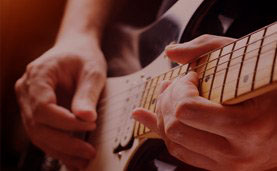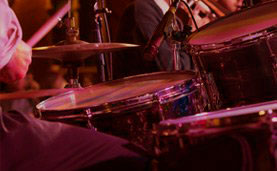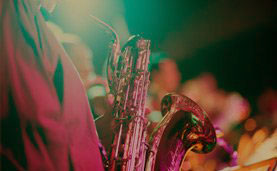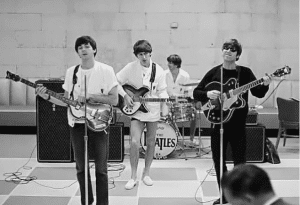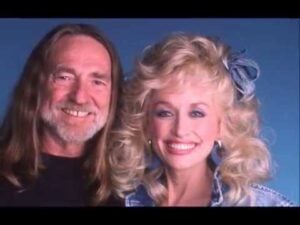The Interesting Story Behind America’s First Rock Festival

via YouTube/ The Doors Miscellany Channel
When people think of historic rock festivals, names like Woodstock and Monterey Pop usually come to mind. But before either of those took shape, there was the Fantasy Fair and Magic Mountain Music Festival—a pioneering event that would help redefine what a music festival could be. Held in June 1967 at Mount Tamalpais in Northern California, it quietly launched the rock festival era.
The timing and location couldn’t have been more perfect. With the Summer of Love blossoming in nearby San Francisco, the air was thick with experimentation, rebellion, and creative energy. The event was organized by local radio station KFRC, with $2 ticket sales going toward charity—a detail that reflects how community-minded the counterculture still was at the time.
Though it tends to get overshadowed by flashier festivals, Fantasy Fair deserves recognition not just for being the first, but for establishing a blueprint that many would follow. It was a blend of music, art, lifestyle, and the unfiltered spirit of the ’60s, coming together in a two-day communal celebration.
View this post on Instagram
A New Kind of Gathering
Prior to Fantasy Fair, outdoor festivals were largely confined to jazz or folk audiences. They were formal, often restrained affairs, more likely to feature neatly arranged seating than barefoot dancers in flowing garments. This festival broke that mold.
Artists like Maria Muldaur later reflected on this shift, pinpointing the moment Dylan plugged in at Newport in 1965 as the start of the transformation. The counterculture was bubbling just beneath the surface, and this festival became one of its first true eruptions. There was a clear shift away from the buttoned-up vibe of the 1950s toward something far more unpredictable.
Fantasy Fair wasn’t just about the music—it was about everything that came with it. It was a new kind of social experiment: colorful, chaotic, and immersive. By inviting the broader hippie community into a shared space, it allowed creative expression to flourish in more ways than one.
Getting There Was Part of the Trip
The logistics of Fantasy Fair were unique, especially by modern standards. Because Mount Tamalpais wasn’t easily accessible, attendees had to park in Marin and take school buses to the event—lovingly dubbed the “Trans-Love” line. That name alone captured the ethos of the era.
Interestingly, the local Hells Angels weren’t hired as security guards in a formal sense, but their presence was welcomed as a kind of unofficial peacekeeping force. Their intimidating reputation helped keep the event surprisingly calm. According to co-producer Tom Rounds, simply having the Angels nearby was enough to make people behave.
These unconventional choices reflected the DIY spirit of the time. There was no corporate sponsor or branded tent. Everything from transportation to crowd control to ambience was done with spontaneity and a little bit of trust in humanity—or at least in good vibes.
A Psychedelic Fairground
Fantasy Fair wasn’t content with being a concert. It borrowed elements from Renaissance fairs and turned the grounds into a wonderland of color, art, and self-expression. There were booths selling handmade goods, banners with astrological signs, and even a massive inflatable Buddha.
Festival-goers embraced the theme wholeheartedly. Some wore period costumes, others painted faces or juggled, and many simply soaked in the atmosphere with wide-eyed wonder. It was a holistic experience—music was only one part of it. The rest was about exploration and connection.
Photographer Elaine Mayes remembered people sliding down hills on cardboard, smoking pot in the woods, and mingling freely under the watchful eyes of unbothered police. That kind of freedom was unprecedented, making the festival feel like an alternate universe—one where norms were suspended in favor of joyful anarchy.
A Wild, Unpredictable Stage
Despite all the art and scenery, the music still took center stage. The lineup included Jefferson Airplane, the Byrds, Dionne Warwick, and Canned Heat. One of the more buzzed-about acts was the Doors, who were still gaining traction outside of Los Angeles at the time.
Their performance was unforgettable, if not for all the right reasons. Jim Morrison, drunk and erratic, fell off the stage mid-song, only to climb back up and finish like nothing happened. That mix of chaos and charisma became part of his legend.
Other acts had their own surreal stories. The Byrds performed without a drummer until a stagehand stepped in, using coffee table legs as drumsticks. Captain Beefheart, meanwhile, had an acid flashback so intense he believed a woman’s face had turned into a fish. The surreal nature of the festival made every performance feel like part of a dream—or a trip.
Legacy and the Vanishing First Chapter
In the moment, Fantasy Fair felt monumental. It was praised in the San Francisco Chronicle and remembered fondly by those who were there. With its combination of bold creativity and cultural openness, it seemed like the start of something big—and it was.
Yet history didn’t quite give it its due. The Monterey Pop Festival happened just one week later and grabbed all the headlines. Two years later, Woodstock sealed the mythos of the rock festival. Fantasy Fair became a forgotten first chapter in the story of rock gatherings.
But for those who were there, it represented a purer moment. As singer Penny Nichols later put it, Fantasy Fair showed the world “how we were and how we felt at the time,” before self-importance and fame complicated things. It was, simply, magic on a mountain—America’s first rock festival in all its messy, marvelous glory.

